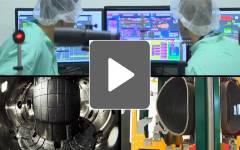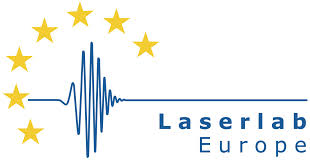On the 30th of May 2016 at 14:15, the Prague Asterix Laser System (PALS) celebrated an important milestone in its history. The Deputy Director of IPP, Dr. Pavol Pavlo, fired the jubilee shot with the number of 50,000.
The PALS Research Centre is a joint laboratory of IPP and the Institute of Physics of the CAS. It was launched in spring 2000 in a new laser hall, which was specially designed and built for the pulsed terawatt iodine laser ASTERIX IV.
Since that time the facility is among the most demanded high-power laser systems among those
exploited in Europe for laser plasma research. The PALS laboratory is a member of the European
LASERLAB-EUROPE consortium and it
offers its experimental time to selected projects submitted by proposers from the entire European
Union.
Wide international cooperation produces a number of valuable scientific
results.
In contrast to other big laser laboratories in Europe, PALS alone is capable of
delivering energy on the order 1 kJ in a single laser beam. Its basic wavelength is 1315 nm.
The PALS laser operates in the regime of short single flashes, shorter than a half of a billionth
of a second, during which the pulsed radiation power reaches a value of several terawatts. By using
special focusing optics the laser beam can be concentrated into a focal spot of a diameter smaller
than a tenth of millimetre. The intensity of radiation in the focus is then up to several billions
of megawatts per centimeter squared.
Hot laser plasma makes it possible to imitate conditions prevailing only in the Universe, in
the atmosphere or even in the nuclei of glowing stars. It enables us to study the behavior of
matter under extreme temperatures and pressures in the laboratory. On the other hand, the laser
plasma offers many practical applications. It can be used as a source of intense ultraviolet and x
radiation, as a source of highly charged heavy ions accelerated to high energies, it can even
itself serve as a laser and produce extremely intense directed x-ray beams. Thus, the laser plasma
finds its use in many scientific fields, from physics and laboratory astrophysics to biology and
medicine, as well as in various technologies, such as x-ray lithography, nano-processing of
materials or ion implantation. However, one of the main goals of laser plasma physics consists in
prospective use of laser-produced plasmas for obtaining energy in alternative thermonuclear
reactors based on inertial laser fusion.
The spectrum of the research programme of the PALS Research Centre as a whole, corresponds
with the above objectives. It comprises the study of properties of laser-produced plasma itself,
investigation of plasma radiation processes and the development of plasma radiation sources, the
study of ion acceleration in laser-produced plasma and development of laser ion sources and
activities linked with the programme of inertial fusion research.
Find more information
here.
Photos: IPP.
30 May 2016











